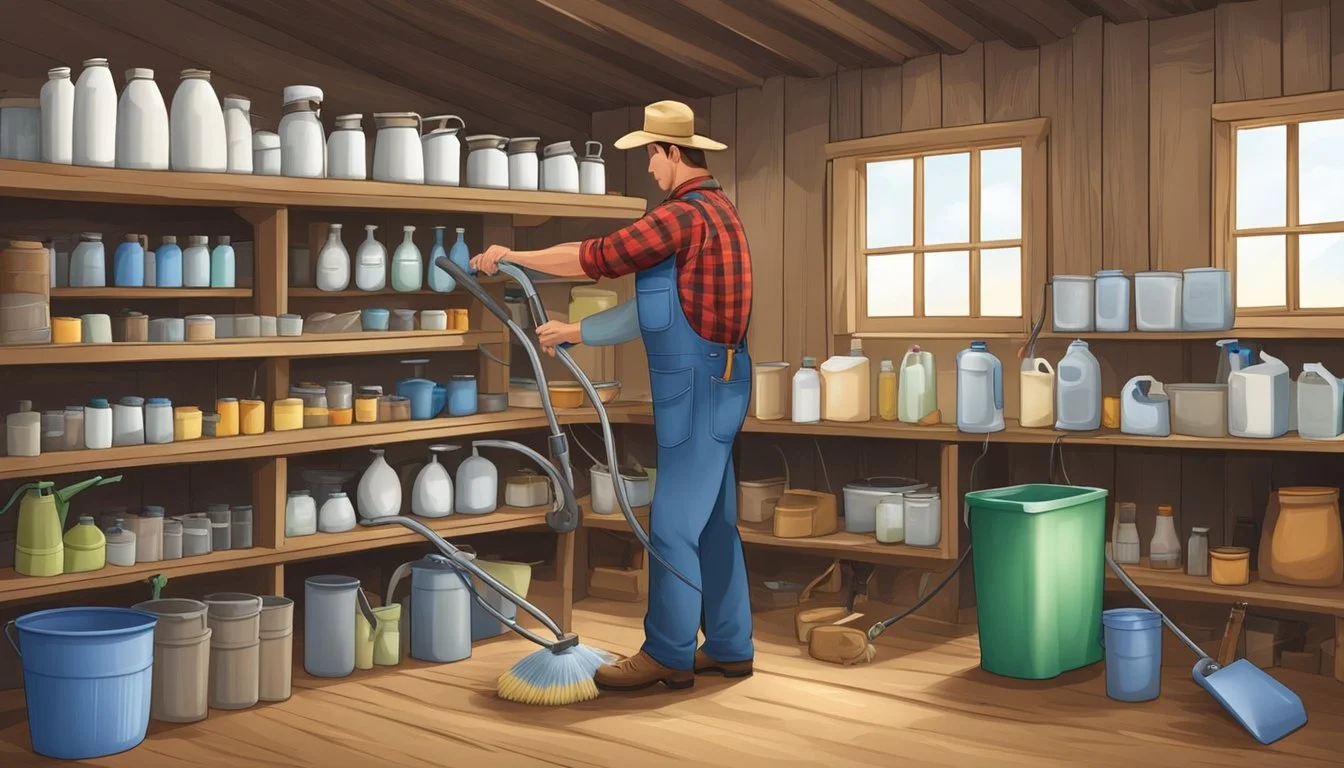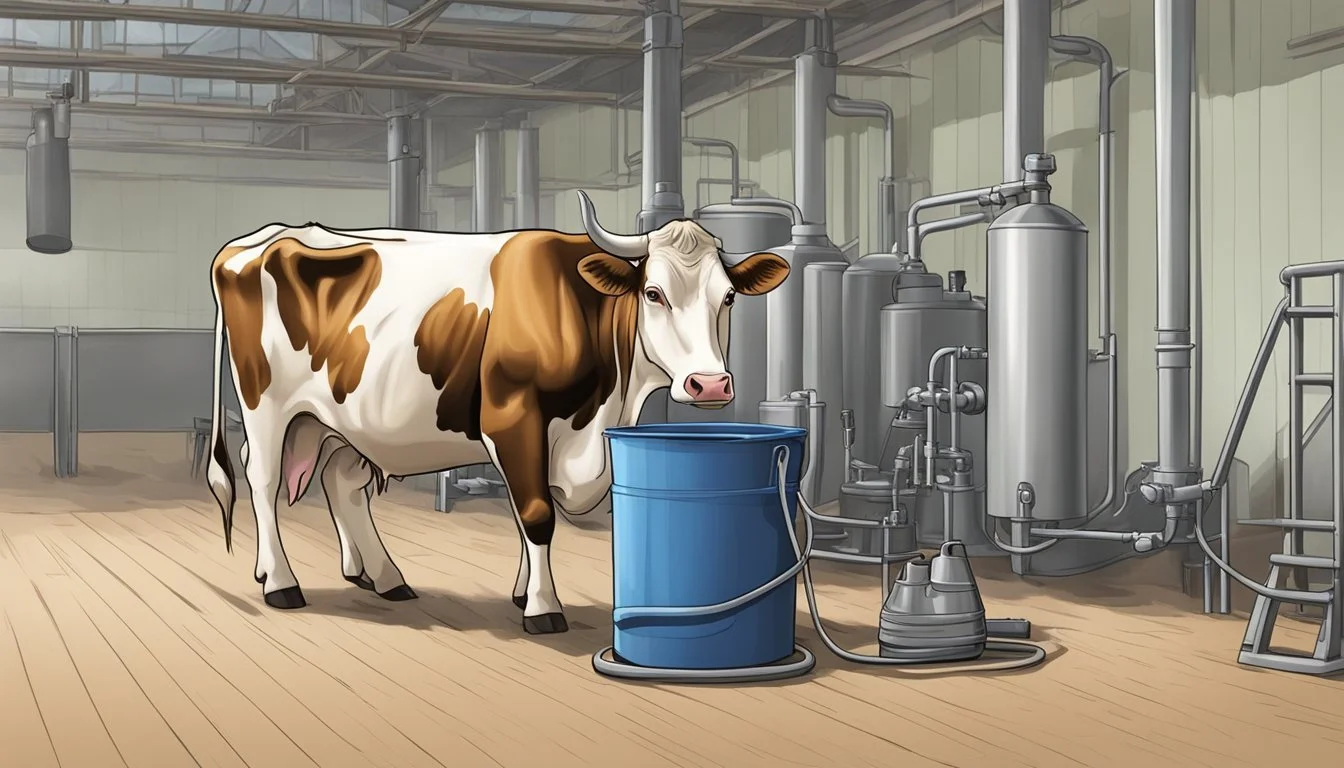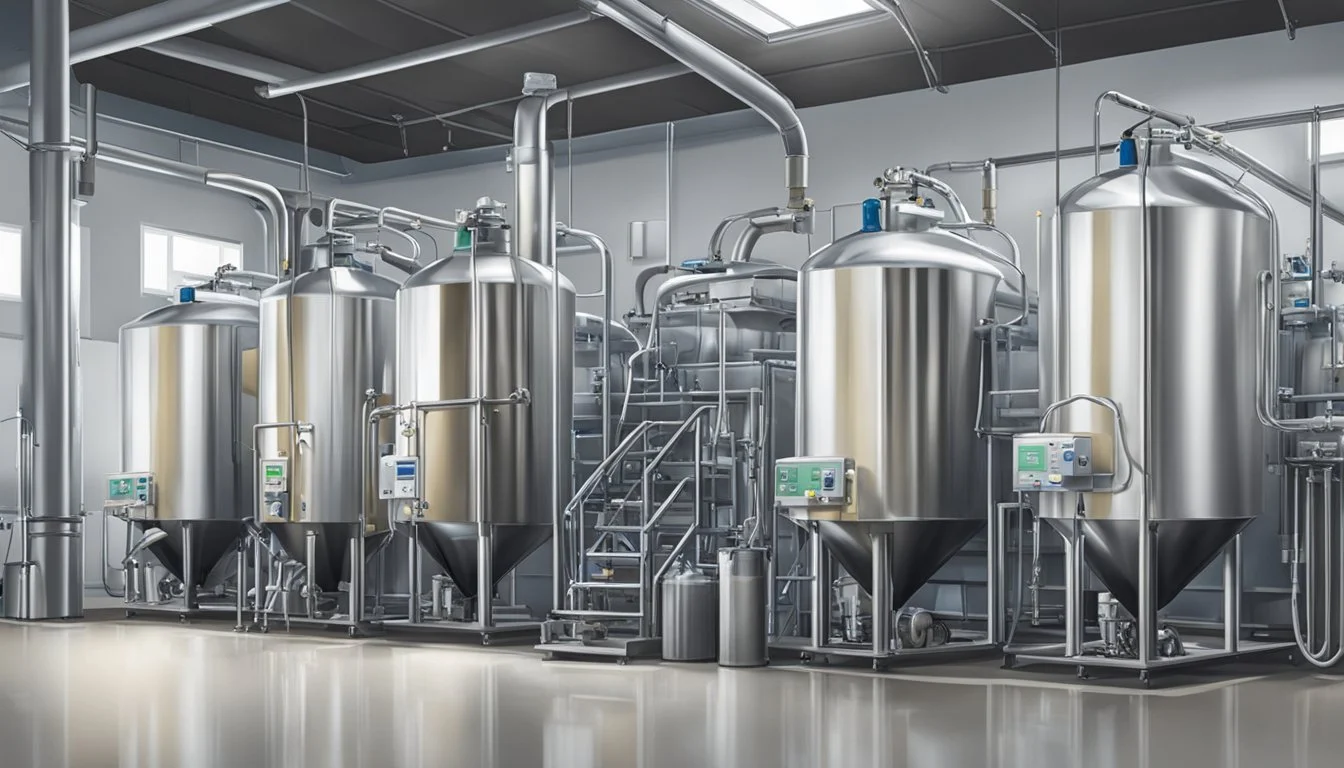What Equipment Do I Need for Milking Cows?
Essential Tools for Efficient Dairy Operations
Milking cows is a crucial part of running a dairy farm, and having the right equipment is essential for both efficiency and animal welfare. Quality milking equipment ensures that cows are milked quickly and comfortably, while also maintaining the cleanliness and purity of the milk. Dairy farmers typically need a variety of tools and machines, ranging from the basics like udder cleaning supplies to more complex machinery such as milking machines and cooling systems.
Every dairy farm setup might look slightly different, but certain items are generally necessary. Milking machines are at the heart of modern dairy operations, designed to gently and effectively extract milk from cows. This process requires not just the machinery itself but also associated components like pulsators, milk lines, and claws. Sanitation supplies are equally important to ensure that the equipment is clean and that the milk is safe for consumption. For those looking to process milk directly on the farm, cream separators and pasteurizers might also be part of the necessary inventory.
Storage and cooling are further considerations; dairy farms need to have a system in place to keep milk at an appropriate temperature until it is ready to be sold or processed. This means investing in milk cooling tanks, which come in various sizes to accommodate farms of all production levels. Proper feed equipment is also paramount to maintain the health and production levels of the cows, which directly influences the quality of the milk produced. Whether it's a simple milk pail for small scale operations or a fully automated milking parlor for larger farms, choosing the right equipment can make a significant difference in a dairy farm's success.
Understanding the Milking Process
The milking process is integral to dairy farming, involving specific routines, equipment, and techniques essential for maintaining cow health and ensuring high-quality milk production.
Milking Routine and Scheduling
A consistent milking routine is crucial for dairy cows as it affects their lactation cycles and milk yield. Cows are generally milked 2-3 times per day at evenly spaced intervals, providing balance between maximizing milk production and maintaining the cow's comfort. It is essential to adhere to a schedule to stabilize the cow's lactation process.
Cow Health and Lactation
The health of a cow directly influences lactation and milk quality. Mastitis is a common infection of the udder and teats that can impair milk yield and quality. Udder health is, therefore, a top priority, with regular checks for signs of infection or inflammation. Additionally, cow comfort plays a significant role in maximizing lactation and minimizing stress, which can affect milk production.
Milk Hygiene and Quality
Producing high-quality milk begins with hygiene. Milking equipment must be sterile, and the cow's udder and teats should be cleaned before milking. This prevents contamination and maintains milk quality. After milking, equipment should be cleaned to ensure no residue remains to maintain a sanitary environment for the next milking session. The hygiene practices can influence the incidence of diseases like mastitis.
The Role of Diet in Milk Production
Diet is a key factor affecting milk quantity and quality. Cows require a balanced diet, high in nutrients, to produce milk efficiently. This includes forage like hay or silage and can be supplemented with grain to meet energy requirements. Nutritional strategies such as rotational grazing can also impact milk yield and cow health.
Milking by Hand vs. Machine
Milking can be done either by hand or using machines. Hand milking is more labor-intensive and less efficient, while milking machines speed up the process and reduce labor. However, it's important that the machinery is operated correctly and gently to prevent harm to the cow and to maintain udder health. Portable milking machines are an option for smaller or more flexible operations. The method chosen will depend on the scale of the operation, investment capabilities, and preference for traditional or modern techniques.
Types of Milking Equipment
Proper milking equipment is critical for efficiency and maintaining milk quality on a dairy farm. This section outlines the different types of equipment used in the milking process.
Milking Machines and Components
Milking machines are at the heart of modern dairy operations. A typical milking machine system includes a vacuum pump, which creates suction to remove milk from the cow’s udder, and teat cups, which attach to the cow's teats and are connected to the pump via hoses. A milking unit encompasses these components and is responsible for the milk extraction process. Each unit typically has a milk flow control system to ensure efficient and safe milking.
Milking Parlor Setup
Milking parlors vary in design based on farm size and the milking process. Parlor setups generally include stations where cows are milked, with a system of hoses, funnels, and pumps for transporting the milk to a centralized tank. Key parts of the setup may include a stainless steel bucket or milk bucket at each station, which collect the milk before it is sent to the cooling tank.
Ancillary Milking Supplies
Additional supplies are necessary for the milking process. Farms will often use jars or other containers for milk sample collection. Cleaning supplies such as brushes and detergents are also essential for sterilizing equipment. Milk filters play an important role in keeping the milk free from debris, while buckets and containers are used for storage and transport.
Maintenance of Equipment
Regular maintenance is crucial for ensuring the longevity and proper functioning of milking equipment. This includes periodic checking and replacement of hoses, inspection of teat cups for wear and tear, and ensuring that the vacuum pump operates at the correct pressure levels. Stainless steel components, such as buckets and funnels, should be inspected for cleanliness and integrity to maintain milk quality.
Selecting the Right Equipment
When preparing to milk cows, the equipment chosen is critical to the operation’s success. It impacts the efficiency, hygiene, and cost-effectiveness of the milking process.
Criteria for Selecting Milking Machines
Selecting the appropriate milking machines involves evaluating several criteria. Key factors include durability, hygiene, and maintenance requirements. Stainless steel construction is often preferred for its longevity and ease of cleaning. The capacity of the machine should align with herd size, with options like the TECHTONGDA 50L Electric Milking Machine being suitable for milking multiple cows efficiently.
Considerations for Small-scale vs. Commercial Dairy Farms
For small-scale operations or those with a family milk cow, a portable milking machine can be a feasible choice, simplifying the milking process without a large investment. On the other hand, commercial dairy farms require larger, more complex systems, such as rotary milking systems, which can handle hundreds of cows per hour and offer significant efficiency.
Investment and Cost-Benefit Analysis
The initial investment in milking equipment must be weighed against long-term benefits. While a manual separator might only cost around $300, an electric cream separator, which can process 21 gallons per hour, might set a farm back approximately $350. Considering factors like labor savings and production rates is essential for determining the most cost-effective milking system for an operation. A detailed analysis of operational needs and financial capabilities will guide the best decision.
Operating Milking Equipment
Efficient operation of milking equipment is crucial for maintaining milk quality and cow health. Proper procedures ensure that milking is comfortable for cows and that the equipment functions effectively.
Preparation and Pre-milking Procedures
Before milking a cow, it's vital to ensure the cleanliness of both the animal and the equipment. Always milk clean, dry, and well-stimulated teats. Pre-milking procedures include:
Inspecting the udder and teats for any signs of abnormalities or mastitis.
Washing and drying the udder and teats thoroughly to remove any contaminants.
Pre-milking stripping which involves gently hand-striping a few streams of milk to check for any irregularities.
Application of a pre-milking teat disinfectant to minimize the risk of bacterial contamination.
Milking Operation and Techniques
The milking process must be consistent to optimize milk yield and maintain udder health. Important aspects include:
Ensuring teat cups are attached properly for efficient and gentle milking.
Monitoring the milking machines regularly to confirm they're operating at correct vacuum levels.
Maintaining cow comfort during milking, as stress can directly affect milk yield and quality.
Timely and even milk extraction, avoiding over-milking which can lead to teat-end damage.
Post-milking Management
After milking, immediate care is critical for the health of the udder and the quality of milk:
Disinfecting teats post-milking to protect against infections as the teat pores are still open.
Observing the cow post-milking for any signs of discomfort or abnormal behavior indicating potential issues with the milking routine or equipment.
Cleaning and sanitizing milking equipment thoroughly after each use to keep the system free from bacteria and ensure milk quality.
Recording and analyzing milk yield data for each cow to stay informed on health and productivity.
Addressing Common Challenges
When operating a dairy farm, maintaining optimal cow health and ensuring consistent milk production are crucial. Addressing common challenges such as mastitis and managing inconsistent milk flow is pivotal for a profitable milking operation.
Handling Mastitis and Health Issues
Diligent attention to udder health is essential in preventing and managing mastitis in dairy cows. Establishing a milking routine that includes regular sanitation can significantly reduce the risk of udder infections. Utilizing equipment like teat dip cups and ensuring that milking machines are functioning correctly helps to maintain the udder health. Notably, dynamic testing of milking equipment is essential for diagnosing potential issues that could lead to health complications, such as improper vacuum levels that damage teats and lead to infections.
Managing Inconsistent Milk Flow and Yield
Inconsistent milk flow and yield can be attributed to factors such as the cow's health, stress levels, and the efficiency of milking equipment. To manage this, farmers should monitor milk yield closely, adjusting feed and milking times as needed. Upgrading to automated systems can also stabilize milk yield by providing a consistent milking experience for the cows. For instance, using a milking machine with a copper motor that can service multiple cows efficiently may improve overall yield by ensuring a steady and gentle milking process.
By addressing these challenges with precision and care, dairy farmers can enhance the health of their dairy cows and the productivity of their milking operations.
Health and Safety Considerations
Health and safety are paramount on a dairy farm, especially during the milking process. It is essential to ensure the comfort and safety of the cows as well as maintain a hygienic and secure environment for both the animals and the workers involved.
Ensuring Cow Safety and Comfort
Cow comfort has a direct impact on milk quality and the overall health of the dairy cows. Milking equipment must be maintained to avoid causing injury or stress to the animals. For example, proper adjustment of the milking machines is necessary as it prevents teat damage and reduces the risk of mastitis, a common infection in dairy cows. Providing adequate cushioning and support in stalls enhances cow comfort, which can increase milk production and quality. It is crucial to follow recommended procedure for milking cows in order, starting with healthy cows first, followed by those with health issues, to prevent the spread of bacteria, as outlined by the EDIS.
Maintaining a Clean and Safe Environment
A sterile environment is essential for the safety of the milk and the health of both cows and humans. All milking equipment should be thoroughly cleaned and sanitized between uses to prevent contamination of the milk. This includes the teats of the cows, which must be cleaned before milking. Regular inspection and maintenance of equipment, like dynamic testing while cows are milking, ensure the systems are free from faults that could compromise cleanliness or safety. A clean milking area also helps in preventing slips and falls, contributing to a safer workplace as described in Ag Proud.
Ensuring that all procedures and equipment adhere to these health and safety considerations is foundational for the success of a dairy farm.
Advanced Topics in Dairy Farming
In the realm of dairy farming, technological advancements and environmental stewardship are paramount. Farmers continuously adopt cutting-edge dairy supplies and equipment to enhance efficiency and promote sustainability.
Innovations in Milking Equipment
The evolution of milking machines has been remarkable. Today's dairy farmers have access to automated dairy systems which employ sophisticated sensors to monitor milk yield, cow health, and milk quality. These innovations not only optimize the milking process, reducing labor costs, but also contribute to better animal welfare. Another significant advance is the introduction of robotic milking systems, which can reduce a farmer's active milking time substantially.
Sustainability and Eco-friendly Practices
Dairy farming is embracing sustainability through practices like rotational grazing, which not only benefits the environment but also supports cow health. This method involves rotating cows between different pasture areas, allowing for the regeneration of grass and preventing soil depletion. Additionally, there is a growing emphasis on using equipment that is energy-efficient and reduces waste, thereby diminishing the environmental footprint of dairy operations. Dairy farms are more diligently managing their resources to ensure that their practices are as eco-friendly as possible.






